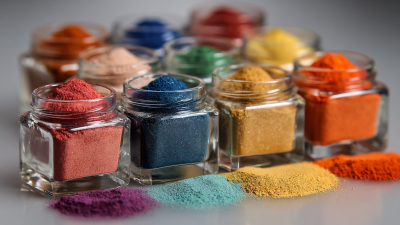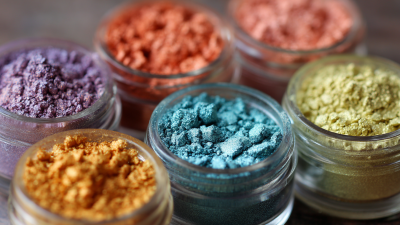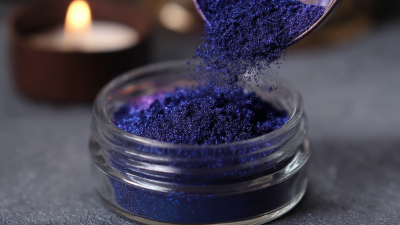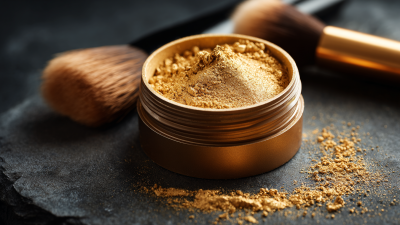When it comes to transforming your creative visions into reality, using the right materials is paramount, and this is especially true for epoxy resin projects. Among the various elements that contribute to the success of these projects, the choice of Epoxy Resin Pigment Powder stands out as a crucial factor. This guide aims to provide you with comprehensive insights into selecting the ideal pigment powder that can elevate your epoxy creations—from vibrant colors to unique effects. We'll explore top strategies for choosing the perfect hues and formulations to suit your needs, whether you're a seasoned artist or a DIY enthusiast. By understanding the properties and applications of different epoxy resin pigment powders, you can ensure your projects not only meet but exceed your artistic expectations. Join us as we delve into the world of epoxy pigments and discover how to make informed choices that will enhance the beauty and durability of your resin projects.

When selecting epoxy resin pigment powders for your projects, it’s essential to understand the different types available and their respective properties. According to a report by MarketsandMarkets, the global epoxy resin market is projected to reach $13.6 billion by 2025, indicating a growing interest in specialty additives such as pigment powders. Pigment powders can be broadly categorized into opaque, transparent, and fluorescent options, each suited for diverse applications.
Opaque pigments provide excellent coverage and vibrant colors, making them ideal for applications requiring solid color finishes. Conversely, transparent pigments allow for a more subtle hue, enabling depth and layering effects that can enhance the aesthetic appeal of resin art. A recent study by the American Coatings Association highlighted that the demand for transparent epoxy pigments has surged by 35% over the last five years, reflecting a shift in consumer preference towards artistic and decorative projects. Fluorescent pigments, on the other hand, are gaining popularity in specialty applications, offering bright, eye-catching finishes that can be used in both functional and artistic contexts. Understanding these differences can help artisans and DIY enthusiasts make informed decisions for their specific project needs.
Choosing the right epoxy resin pigment powder can significantly enhance the aesthetics and durability of your projects. When selecting pigment powders, one of the key factors to consider is the type of pigment itself. Various types, such as metallic, pearlescent, and matte pigments, each have unique characteristics and applications.
 Metallic pigments, for instance, bring a striking visual appeal and depth to your creations, making them ideal for artistic and decorative projects.
Metallic pigments, for instance, bring a striking visual appeal and depth to your creations, making them ideal for artistic and decorative projects.
Additionally, it's essential to evaluate the compatibility of the pigment with your chosen epoxy resin system. Different resins may react differently with various pigments, affecting the final outcome. Make sure to check the manufacturer's recommendations for the specific resin you are using. Another critical consideration is the opacity or transparency of the pigment; this will influence not only the color quality but also the overall effect you wish to achieve. By taking these factors into account, you can make an informed decision that will elevate your epoxy resin projects to the next level.
When diving into the world of epoxy resin, the importance of selecting the right pigment powder cannot be overstated. The epoxy resin pigment powder market is dynamically categorized, showcasing a variety of process types, including bonding, blending, and extrusion. In 2023, the metallic powder coatings segment is projected to witness significant growth, reflecting the increasing demand for aesthetically pleasing and durable finishes in various applications, from arts and crafts to industrial uses.

Among the brands dominating the epoxy resin pigment powder landscape, several have gained notable attention for their quality and variety. Research indicates that superior pigment concentration allows for vibrant color representation, effectively enhancing the visual appeal of resin projects. Furthermore, color stability and compatibility with different epoxy types are critical factors that influence selection. As consumers seek materials that not only meet their artistic needs but also uphold safety and compliance standards, understanding the market's top offerings becomes essential for both hobbyists and professionals alike.
When it comes to achieving the best results in your epoxy resin projects, understanding how to mix and apply pigment powders effectively is essential. The metallic powder coatings market is experiencing substantial growth, driven by diverse applications across various industries. A recent report categorizes this expansive market by process types including bonding, blending, and extrusion, highlighting that each method plays a unique role in enhancing the final product's durability and aesthetic appeal.
Mixing pigment powders into epoxy resin requires careful attention to ratios and techniques. For optimal dispersion, it's recommended to begin with a small amount of resin and gradually introduce the pigment, ensuring an even color throughout. According to industry data, properly mixed pigments not only improve the visual aspects but also maintain the resin's fundamental properties. Additionally, experiments have shown that different formulations can significantly impact the flexibility and curing time of the resin, necessitating fine-tuning based on project requirements. Understanding the nuances of application methods will help achieve a flawless finish and longevity in your resin art.
| Color | Transparency | Mixing Ratio | Recommended Application | Curing Time |
|---|---|---|---|---|
| Ocean Blue | Translucent | 1-2% by weight | River tables, Jewelry | 24 hours |
| Sunset Orange | Opaque | 2-3% by weight | Coasters, Art pieces | 48 hours |
| Emerald Green | Transparent | 1-1.5% by weight | Tabletops, Decorative items | 36 hours |
| Passion Pink | Translucent | 3-4% by weight | Artistic projects, Mixed mediums | 24 hours |
| Dazzling Gold | Opaque | 2% by weight | Decorative coatings, Furniture | 48 hours |
When selecting epoxy resin pigment powders, it's easy to fall into common pitfalls that can affect your project's outcome. One of the primary mistakes is not testing the pigments before the main application. Always create small test batches to see how the colors react with your epoxy resin and how they look once cured. This step can save you time and resources, ensuring the final product aligns with your vision.
Another frequent error is neglecting to consider the pigment's opacity and transparency. Some projects may require a fully opaque finish, while others might benefit from a translucent effect. It's essential to choose pigment powders that match the desired intensity and visibility in your project. Check the product descriptions carefully, as some pigments may appear differently in the container compared to their application.
**Tips:** Always keep in mind the mixing ratio of the pigment powder to your epoxy resin; using too much can lead to undesired effects, while too little may not provide the vibrancy you need. Also, consider the environment where your project will be displayed. UV stability is crucial if the item will be exposed to sunlight, as some pigments can fade over time.
This chart illustrates common mistakes made in selecting epoxy resin pigment powders based on different aspects such as color consistency, dosage calculation, mixing method, and curing time. Understanding these pitfalls can help improve the overall quality of your projects.






